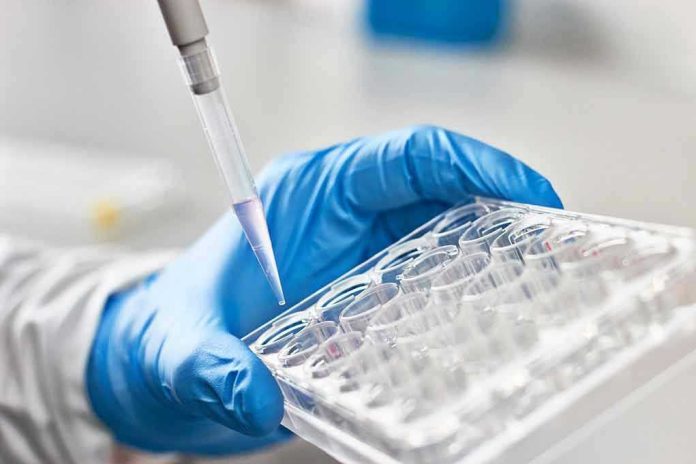
A groundbreaking blood test that can detect dozens of cancer types before symptoms appear represents the most significant advancement in early cancer screening in decades, potentially saving countless American lives through earlier intervention.
Story Highlights
- PATHFINDER 2 trial with 35,878 participants shows blood test detects cancer signals in nearly 1% of healthy adults
- Multi-cancer detection technology increases cancer detection more than seven-fold when added to standard screening
- Single blood draw can screen for multiple cancer types simultaneously, unlike traditional single-cancer screening methods
- Technology could transform cancer care from reactive treatment to proactive prevention for American families
Largest Cancer Screening Study Reveals Breakthrough Results
The PATHFINDER 2 trial represents the most comprehensive evaluation of multi-cancer early detection technology ever conducted. This landmark study enrolled 35,878 participants across 50 clinical sites in the United States and Canada, focusing on asymptomatic individuals aged 50 and above with no recent cancer history. The trial’s scope demonstrates American medical research leadership in developing life-saving diagnostic technologies that could benefit millions of families nationwide.
GRAIL’s Galleri test uses advanced liquid biopsy technology to detect DNA-methylation markers in blood plasma from cancer cell fragments. Unlike traditional screening methods that target single cancer types, this innovative approach can simultaneously identify signals from dozens of different cancers. The technology represents years of scientific validation and technological refinement, positioning America at the forefront of precision medicine and early cancer detection capabilities.
Seven-Fold Increase in Cancer Detection Rates
Results from 23,161 participants with complete 12-month follow-up data revealed cancer signals in 216 cases, representing 0.93% of the screened population. This translates to approximately 9.3 cancer detections per 1,000 people tested. Most significantly, when the multi-cancer detection test was added to U.S. Preventive Services Task Force recommended screenings like mammography and colonoscopy, cancer detection increased more than seven-fold compared to standard screening alone.
The breakthrough addresses a critical gap in American healthcare where traditional screening programs cover only five cancer types: breast, cervical, colorectal, lung, and prostate. This leaves the majority of cancer types without established early detection methods, often resulting in diagnoses at advanced stages when treatment options are limited. The multi-cancer detection approach could fundamentally change this paradigm, offering hope for earlier intervention across a broad spectrum of cancer types.
Implementation Challenges and Healthcare System Impact
Healthcare systems nationwide face important decisions regarding integration of multi-cancer detection testing into clinical workflows. Implementation requires infrastructure for sample collection, processing, results delivery, and diagnostic follow-up procedures. Healthcare providers must develop protocols for managing patients who receive positive cancer signals, including appropriate diagnostic workups and patient counseling approaches that maintain confidence while ensuring thorough evaluation.
The economic implications extend beyond healthcare systems to insurance companies and payers who will determine reimbursement policies. Cost-effectiveness analyses must weigh upfront testing expenses against potential savings from treating earlier-stage cancers rather than advanced disease. These decisions will significantly impact access to this potentially life-saving technology for American families, particularly those in underserved communities who already face healthcare disparities.
Regulatory Approval and Clinical Utility Questions
While the PATHFINDER 2 results demonstrate the test’s ability to detect cancer signals, critical questions remain about whether such detection translates into improved patient outcomes. A new national clinical trial is currently underway to determine whether multi-cancer detection tests actually improve cancer survival rates through earlier treatment intervention. This represents the essential next step for widespread clinical adoption and regulatory approval by the FDA.
Expert analysis emphasizes the importance of distinguishing between cancer signal detection and meaningful clinical outcomes. Dr. Eric Topol’s review of the PATHFINDER 2 data noted the significance of the nearly 36,000-participant dataset while stressing the need to understand whether detection capabilities translate into better patient results. This conservative approach ensures that American healthcare resources are allocated effectively and that patients receive genuine benefit from new diagnostic technologies rather than false reassurance or unnecessary anxiety.
Sources:
Break Through Cancer Press Releases
The Largest Study of a Multi-Cancer Early Detection Blood Test
Breakthrough Cancer Therapy Moves to Phase 2 Trials














